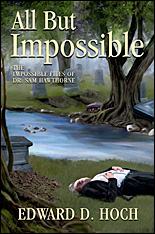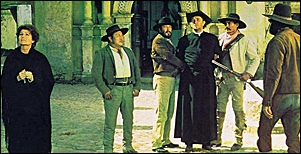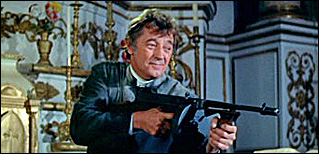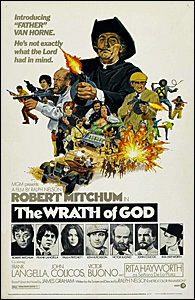
D. B. OLSEN – The Cat Saw Murder. Rachel & Jennifer Murdock #1. Doubleday Crime Club, hardcover, 1939. Dell #35, paperback, mapback edition, no date stated.
Although this is the second case for Lt. Mayhew, his first being The Clue in the Clay (Phoenix Press, 1938), this is the book that introduced Rachel Murdock (and only briefly in this one, her sister Jennifer) to the world of mystery fiction. And for someone who’s 70 years old, Rachel is active and agile, with a sharp, inquisitive mind.
It’s her niece whom she’s come to visit, and her niece who is the victim of bloody murder, with a whole rooming house full of suspects. And of course there is a cat. The whole story is told with gaps and holes, however, and it’s all muddled up in grand old fashion.
[PLOT WARNING] And it’s the gaps and holes that I’ll be discussing from this point onward, and while I don’t intend to tell you whodunit, I am going to tell you more details of the plot than I would if this were a more ordinary review. Let’s go point by point:

(1) I suppose one cat could be switched with another, and the owner would never be able to tell the difference right away, but it doesn’t seem likely to me that such a masquerade could be pulled off for very long. On page 126, at any rate, Miss Rachel expresses doubts to Lt. Mayhew that her cat Samantha is really the cat she’s always had. “No,” she told him slowly. “I’m not sure.” End of chapter.
Whether or not she could be taken in by somebody else’s cat, when the next chapter begins, this small piece of the plot is totally ignored — no questions, no immediate followup, no anything — and it’s page 208 before it’s brought up again, when Rachel decides to test the possibility that the cat’s fur has been dyed.
(2) The same kind of maneuver takes place at the end of Chapter 17. Miss Rachel is questioning Clara, a small girl who lives in the house, and Clara says she knows “Something happened the night the lady died.” She won’t tell Rachel, though, not until she’s promised a kitty of her own. End of chapter.
The next chapter begins, nothing is mentioned, and it isn’t for another 20 pages that Miss Rachel decides to get serious about it. Then she promises Clara a kitty, and they all discover that the girl saw someone leaving the dead woman’s apartment that night with a bloody axe in her hand. This is not what I call terrific detective work.

(3) Mayhew is not really a slouch as a detective, since he did get alibis from everyone in the house immediately after the murder — and it was pretty good work to establish that it was an inside job so quickly — but then why does it take him until page 235 to start cross-checking those alibis, and then until page 244 before he starts out on the footwork needed to verify them?
(4) I don’t understand this one at all. On page 118 he sets up a trap for the killer with a girl he is starting to get sweet on. “I’ll be watching,” he tells her on the same page. On page 127, he’s woken up from his vigil to find Sara in the process of being strangled in the room across the hall. He taps gently on the door and asks, “Is everything all right” The girl’s half dead, and he’s tapping gently on the door.
(5) In Chapter 16 the girl’s mother tries to commit suicide. Why? I don’t know. She’s rescued in the nick of time, and the matter’s never mentioned again.
(6) The man across the hall from the murdered woman has disappears, but Mayhew finds a note with the word CAVES written on it hidden inside a shoe. Does he suspect that there are caves in the area where the man will eventually be dug up? Nope. Is that where he’s found? Yep.
(7) You’re going to think I’m screwy, but I enjoyed the book anyway, and I’d read the next in the series any time at all. You figure it out.
— Reprinted from Mystery*File #23,, July 1990. (slightly rearranged and revised).
Bibliographic Notes: Lt. Stephen Mayhew appeared in seven of D. B. Olsen’s detective novels, five of them overlapping the mystery adventures of Rachel and Jennifer Murdock, who appeared together in 13 novels between 1939 and 1956, all of which featured cats in the title.
As for D. B. Olsen, she may be better known today under her real name, Dolores Hitchens, which starting in 1952 she used as the byline for 20 later novels, sometimes in tandem with her husband Bert, that were not nearly as cozy as the Olsen books were.




